Kalina "Buldenezh": description, cultivation, examples in landscape design
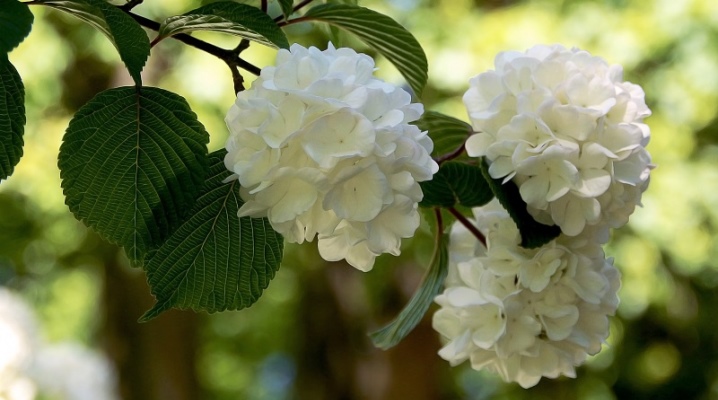
Kalina "Buldenezh" is deservedly considered one of the most beautiful shrubs used in landscape design. Unfortunately, luxurious, heavy inflorescences are accompanied by a complete lack of aroma.
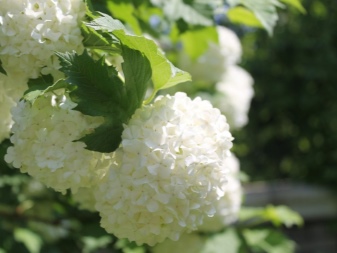
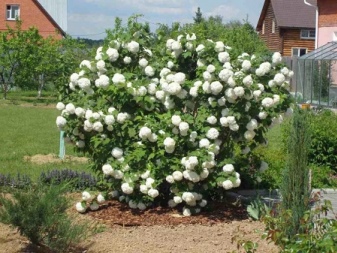
Description
Viburnum "Buldenezh" is a kind of viburnum ordinary. In Latin, its name sounds like Viburnum opulus, and translated from French means "Snow Globe". In fact, this is a shrub that has a rather wide crown and reaches a height of about 4 meters. Subject to the conditions of planting and the rules of care, you can achieve a 50-year period of the life of the culture. "Buldenezh" blooms in June for 2-4 weeks.
The inflorescences resemble a ball in their appearance, the shade of which changes from green to snow-white, and then pinkish. The diameter of such a heavy figure is from 7 to 15 centimeters. The older the plant becomes, the more inflorescences are formed on it. The leaves of the viburnum, which are 12 centimeters long, are very beautiful and have a neat carved border.

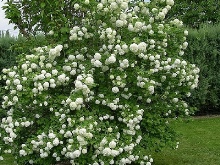
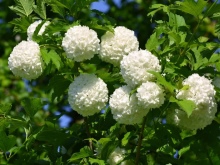
The shoots of the plant every year increase in length by about 30-40 centimeters, but growth stops after 7-10 years of life. The crown width is 2 to 4 meters. The fruits of the viburnum "Buldenezh" are not formed, and therefore there is no need to worry if they are edible.
It is important to mention that the decorative viburnum of this variety does not have any aroma. This, incidentally, explains the second name of the viburnum - sterile. One of the advantages of the plant is its good frost resistance, although shrubs can suffer in particularly cold winters.
It is important to mention that Russian gardeners often plant Roseum viburnum, which is a type of Buldenezh viburnum and is characterized by the appearance of pink double flowers.
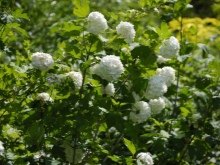
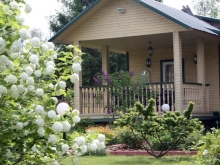
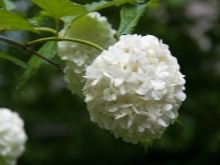
How to plant?
It is better to plant the seedlings of the viburnum "Buldenezh" on a site with partial shade. The soil should be nutritious and loose. If you choose an open area with constant exposure to direct sunlight, the leaf plates may be damaged, and excessive shade will slow down the development and deteriorate the quality of the inflorescences. Since the culture reacts well to moisture, you can plant it next to any body of water. Nevertheless, it is important not to allow stagnation of water, and therefore you should first attend to the creation of a drainage layer.
Viburnum planting is carried out either in the fall or in the spring. The hole must be dug in such a way that the free space is 2 times larger than the root system with the lump.
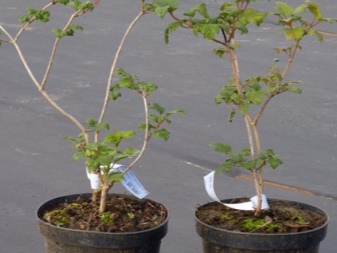
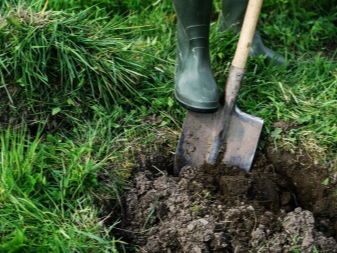
As a rule, we are talking about a depth equal to 50 centimeters, as well as a pit diameter of about 60 centimeters. A drainage layer is formed in the hole, on top of which a mixture of a glass of nitrophoska, a couple of glasses of ash, as well as 3-4 buckets of compost are laid. If desired, sand or peat is immediately added inside.
To remove the seedling along with the earthy clod, the container is hit on the ground. Then the roots are carefully straightened, after which the viburnum is placed in a hole on the formed central mound so that the root collar is 3-4 centimeters lower than the level of the ground surface. The pit is filled up with the remnants of the earth and carefully compacted. The shrub is abundantly irrigated and mulched with peat, bark or humus when the soil subsides.
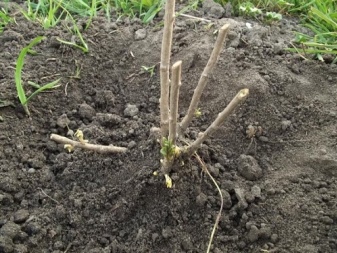

Follow-up care
The most important thing for a plant is to ensure regular watering, but otherwise the care process is not particularly difficult. It is necessary to immediately clarify that transplanting a shrub to a new place is allowed only when the young viburnum turns at least 2-3 years old, and the root system is sufficiently developed. If the viburnum "Buldenezh" grows in the Urals or Siberia, proper preparation will also be required before the start of the winter season.

Watering
The frequency and abundance of irrigation should be determined depending on the level of dry land. Both over-watering and lack of irrigation will negatively affect the flowering process. In a prolonged period of rains, accompanied by low temperatures, it is generally possible to refuse watering for a while. Typically, the frequency of watering is 2-3 times a week, with about 20 liters of water per shrub, which is equivalent to two buckets of liquid.
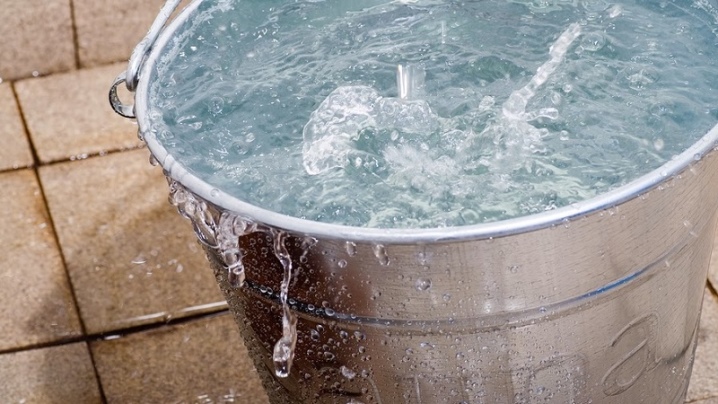
Top dressing
It is necessary to feed the viburnum "Buldenezh" twice - in the spring before flowering and in July. You can use complex mineral fertilizers suitable for ornamental crops, or ordinary wood ash. A combination prepared by yourself is also considered a good one. In the spring, the viburnum should be fed with 20 grams of potassium, 40 grams of nitrogen and 30 grams of phosphorus, used to process one square meter. In July or mid-August, the plant will need 40 grams of potassium and 20 grams of phosphorus, which will be required for the same square meter of planting.
If the soil is initially nutritious, then it will be enough just once a year in the spring months to process each bush with two buckets of compost. The fertilizers themselves can be simply scattered in the trunk circle with the obligatory loosening and watering. You can use a more complex method. First, holes are formed around the trunk, extending to a depth of 20-30 centimeters. A garden drill or an ordinary wooden stake is suitable for this. Fertilizer is poured into each hole in such an amount to distribute the entire dose evenly.
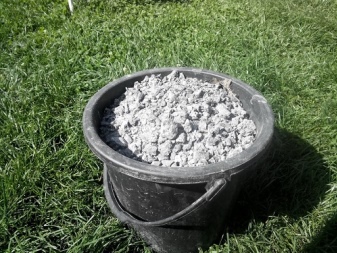

Pruning
The formation of a bush is a mandatory procedure for Buldenezh. In the spring, before flowering begins, it is necessary to cut off dried, broken or weakened branches. Cutting also includes the elimination of shoots growing in the center of the bush and violating the harmony of the form. After flowering in the summer, thinning of the central part of the crown is carried out. In addition, it is also necessary to trim some of the side branches, making sure that each shrub has no more than 8 skeletal branches. This must be done, and if the bush is growing too quickly.
For to rejuvenate the viburnum, you will have to cut off all the shoots, leaving only branches with a height equal to 20-25 centimeters. It should also be mentioned that the blooming viburnum begins to bend under the weight of the blooming "balls". To avoid the problem, it is better to tie up the shoots of the bush on the supports. All wounds formed during care or other procedures must be treated with a solution of copper sulfate, and then coated with garden varnish.
When forming a crown, you can choose a ball, a triangle, and it is also possible to grow a crop on a trunk.
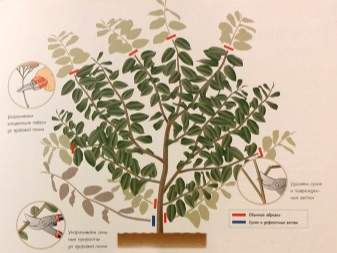
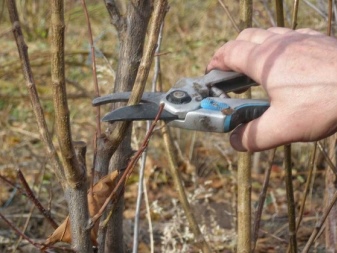
Preparing for winter
Before constructing a shelter for the "Buldenezh" viburnum, it must be watered abundantly in the fall until frosts begin. In young shrubs, composting of the surface near the trunk is mandatory. Additionally, it is necessary to cover the roots with needles, sawdust or dried foliage.
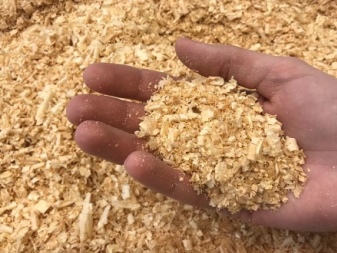

Disease and pest control
Kalina "Buldenezh" quite often becomes a target for various pests. In most cases, you have to deal with the viburnum leaf beetle, as well as the viburnum aphid, called the leafworm. It is imperative to get rid of these insects, otherwise the bush will quickly turn out to be almost completely nibbled.As a prophylaxis in the spring, before the buds begin to bloom, viburnum is treated with special insecticides. These drugs will also allow you to cope with the scabbard. Aphids are driven from the bush by spraying with soapy water, and scared away by scattering wood ash in the trunk circle.
If the leaves are covered with a whitish bloom, then the reasons may be infection with powdery mildew. Treatment is carried out with a soap and soda solution. For its preparation, about 100 grams of soda is added to 20 liters of soapy water. Shrub processing is carried out every week. The culture can fully recover in about 2 weeks. As a preventive measure, in the spring, you can also treat viburnum with tobacco, garlic or onion solutions. If the viburnum "Buldenezh" does not bloom, then, perhaps, the problem lies in the excessive thickening of the bush, and it is necessary to prune it. The leaves of a crop turn yellow, as a rule, due to a violation of irrigation conditions.
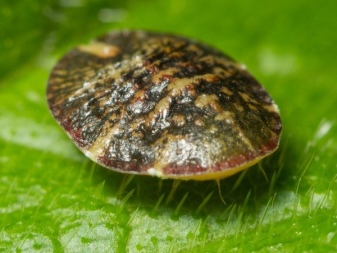

Reproduction
Viburnum "Buldenezh" is propagated most often by cuttings or layering.
Cuttings
Branches with several buds are used as cuttings. Before planting in the soil mixture, they are placed in a solution for about 10 hours to stimulate the formation of the root system. Cuttings dipped into the holes should be covered with glass jars or plastic bottles to create a greenhouse. Having provided the culture with moderate watering, in August it will be possible to expect the appearance of shoots. A piece of roots is also suitable as a cutting, the division of which takes place in the fall.
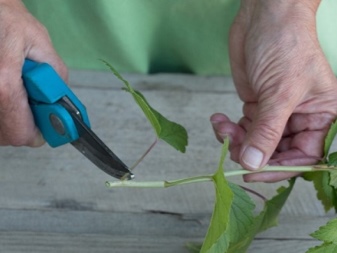
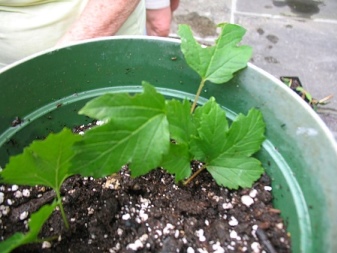
Layers
To implement this method, it is necessary to select low-growing annual shoots and lay them in grooves up to 10 centimeters long. The stems are laid in such a way as to look along the growth line. The shoots are first fixed with metal brackets, and then covered with earth.
After high-quality irrigation, it will be enough just to wait for the roots to appear.

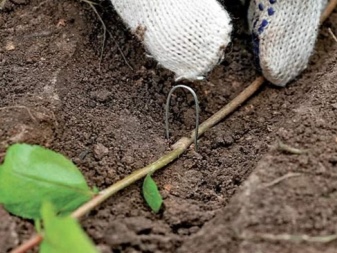
Application in landscape design
- Kalina "Buldenezh" is used both in a flowerbed or in complex landscape compositions, as well as in individual plantings.
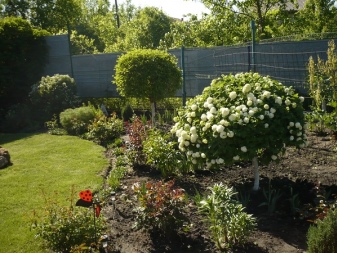
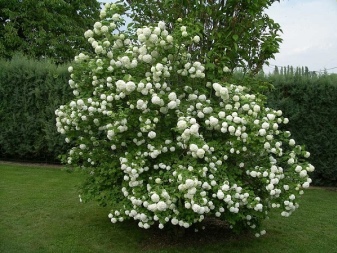
- Most often, designers advise planting viburnum in the garden next to dwarf varieties of barberry or spirea. These shrubs properly hide the lower part of the viburnum, thereby only emphasizing the beauty of the blossoming inflorescences.

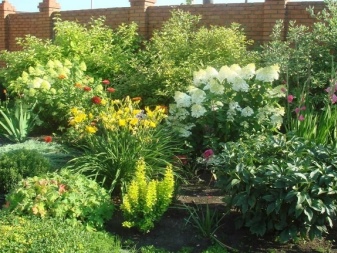
- "Buldenezh" looks beautiful at the corners of the paths or along the existing curbs, as well as next to benches or gazebos.
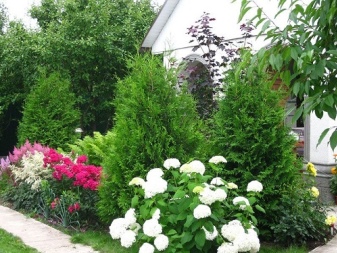
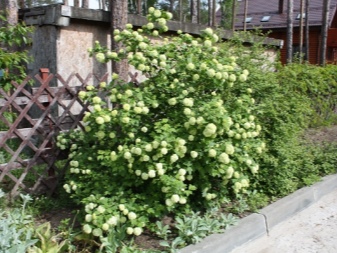
For information on how to plant and care for the "Buldenezh" viburnum, see the next video.



































































The comment was sent successfully.